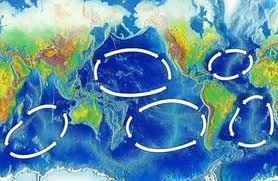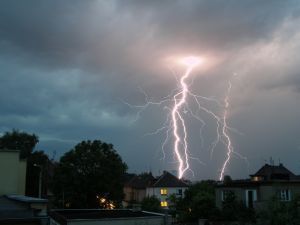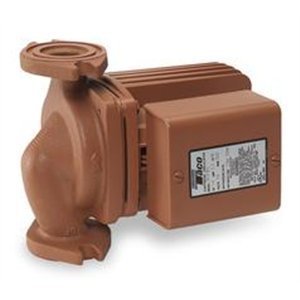Ocean currents are one of the main factors that affect climate. Other factors are proximity from the equator, distance from the sea, direction of prevailing winds and relief (mountains). But, for the most part, ocean currents act as one of the most important factors that influence the climate. And the reason why is because a current is water that travels. With that traveling water comes heat.
The best example of a current is the Gulf Stream. This is a current of water that originates in the Gulf of Mexico and heads north in the Atlantic toward Western Europe and The United Kingdom. It then circles around and goes back to the Gulf. A current, therefore, is water that goes in a cycle. It goes north and then loops around and goes south and then loops around and goes north again.
When the current heads north from the Gulf of Mexico, the water is typically very warm because of how near it is to the equator. However, more than just the water being warm, the air that goes with the warm water is also warm. So, warm water and water air are moving north into a region that is farther from the equator. It’s like having the heat on in one room of the house and then opening all the doors so that the heat can flow into them.
When the warm air and water get north–toward the United Kingdom, Portugal, France and Spain–the water mixes with the slightly cooler water in this northern region and warms. However, the air is what is most important. The warm air typically is very moist. It carries a lot of water because it is coming from a very wet place. Because of the warmth, evaporation occurs thus hydrating the air.
It is because of this that in the United Kingdom, it rains a lot. The warm air flows over Britain and as the cold air of Britain mixes with the warm air that came from the Gulf Stream, the water condenses and it rains. However, the Gulf Stream is also to blame for there being very little, if any, ice in Western Europe, but when summer comes along, it’s very warm. In other words, the Gulf Stream allows for a temperate climate year round for Western Europe.




J.Honeycutt
Why is there a smiley face after you just said you almost got raped??!!
Gust836
I hate science, but this is probably the first time I have ever enjoyed it! 🙂 I like science now!
Vivian Markus
Very nice…….really help me.
A lot….Kudos.
David
This was great. Thanks a lot
me
Honestly, this doesnt answer my question,the question is: Explain how the specific heat currents influence the climate. Use the following elements in your response: convection, the air mass, specific heat, movement, warming / cooling.
Can anyone help answer that please? it would be greatly appreciated
Science_Geek_101
Well, the article tells us that warm currents are warm air and warm water. So when that warm air reaches a place, it is warmer there due to the convection of warm air. The air mass there will be warmer than where a cool current reaches a place. The specific heat of that place will probably be lower as the area is already warmer. The movement of air or convection is also helping this. Your Welcome
Dgyen Dorji
Is this really an article?
or just a mess?
why don’t be specific?
12345
haha Macheter butthole
Emily
Who is the author of this ?
Antonnella
well, its good to know but what about cooler currents and how the land becomes cooler because of current. The warmth explanation is easy, but the information seems incomplete.
Random
I agree, I wanna know how currents can make areas cold too.
Camille Nguyen
Great way to explain it!! Well done!! 🙂
Mena
Thank you so much…That was really helpful
Yash Brutti
That was amazing! I love science!!!!!!!!!!!!!!!
Anakth
That was very informative!